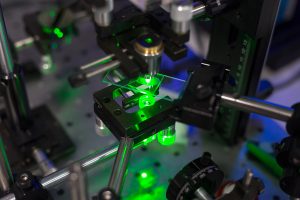New research by the University of British Columbia used a skin laser for diagnosing and treating cancer. The researchers developed a special microscope that utilizes a laser to operate it. Equally, the same system can also treat skin cancer by merely intensifying the heat of the laser.
The researchers succeeded to develop this microscope that detects what is going on 1 mm under the skin from various angles. Furthermore, the diagnostic device can subsequently turn into a treatment device without cutting through the skin.
Wide applicability of the technology
The researchers have cooperated with various departments of UBC, like mechanical engineering, electrical engineering and even the department of ophthalmology. Consequently, the result was a miniaturized version of the same technology. Additionally, a physician can combine this method with endoscopy examinations and ophthalmological examinations. On the contrary, there is a unique difference from methods presently used. The new method uses a microscopic examination and immediately after the patient can receive treatment.
Senior author Haishan Zeng said: “We are not only the first to achieve fast video-rate imaging that enables clinical applications, but also the first to develop this technology for therapeutic uses.”
Dermatology application
The dermatologist can zero in on a suspicious skin lesion, locate it, diagnose it and immediately treat it. The most common application would be skin cancer. After diagnosing it the operator merely intensifies the laser beam and the cancer is treated.
Discussion
Up to this point endoscopic procedures use a fiberoptic instrument, where a suspicious lesion may be detected. A tissue sample is then sent to a pathologist and 1 week later the histological result becomes available. If the lesion was cancerous you have to return and remove it surgically. With the new special microscope a softer laser will diagnose the condition and indicate whether it is cancerous or not right on the spot. In the case of cancer, the operator of the laser microscope merely intensifies the heat of the laser and this removes the skin lesion without touching the integrity of the skin. This new procedure will allow physicians to have a much faster turnaround time between diagnosing a skin lesion and treating it.
Conclusion
Scientists at the University of British Columbia have invented a new microscope that uses a laser to operate it. It is both a diagnostic tool as well a treatment tool. In order to treat skin lesions with this device, the doctor just has to intensify the heat of the laser and it will remove the lesion without injuring the skin. It is not quite clear what other applications there will be in the endoscopic field, but it likely will mushroom to many. It is simply unheard of with conventional procedures that there is no delay between diagnostic verification and treatment. This would be a groundbreaking first!







